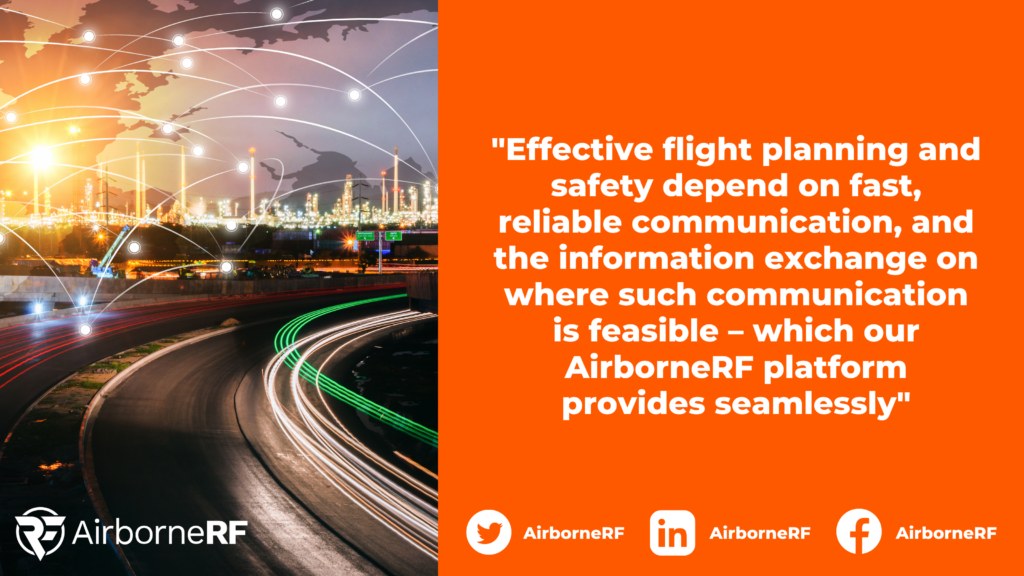The Aerial Connectivity Joint Activity “ACJA” Work Task 2 published its latest document:
The document was produced by ACJA Work Task 2 members, led by Thomas Neubauer, Business Development Vice President of TEOCO and co-founder of Dimetor. It describes the ‘Network Coverage Service,’ a general architecture comprising stakeholders, services, interfaces, and data models for the automated data exchange.
Thomas says:
“The document reiterates the importance of cellular connectivity for scaling Beyond Visual Line Of Sight (BVLOS) operations in urban airspace and marks progress towards a more effective, integrated airspace. Digital data from connectivity providers must be utilized to support a drone operator’s risk management. Effective flight planning and safety depend on fast, reliable communication, and the information exchange on where such communication is feasible – which our AirborneRF platform provides seamlessly.”
AirborneRF welcomes this document as an essential contribution to automated data exchange between MNOs and the UTM ecosystem. Presently, BVLOS flights using cellular Command and Control (C2) must only be conducted after a manual process has been performed to assess coverage. This process is complicated with current data sharing limitations held by the MNOs. To scale, it is necessary to automatically exchange data between MNOs and USS (UAS Service Supplier) or the respective UAS operator. Such coverage and flight path exchange are crucial to arrive at performance-based communication metrics and assist regulators in defining cellular roles in aviation.
Leveraging the network connectivity to provide safety and other value-added services is possibly what motivated the European Commission as well in the recently approved U-Space Regulatory Package. The European Regulator has recognized the importance of connected infrastructure and has mandated Network Remote Identification (as well as three other services, namely Geo-Awareness, Traffic Information and Flight Authorization) when operating in the newly established U-Space Airspaces.
The document’s theory is already under implementation in a cross-border EU-funded program GOF2, in which AirborneRF will play a key role by enabling beyond-visual-line-of-sight (BVLOS) UAV data exchange for flight planning and operations.
A vital part of the project is to show that cellular connectivity is a technology enabler for safe, efficient, and reliable traffic management of all aircraft at a low level. The participants will be able to receive coverage information primarily for C2 but also for payload traffic. A communication channel is crucial to exchange data safely between a traffic management system (or drone operator, USS/USSP or equivalent) and an MNOs.
The project members will test drone flights using communication services supplied by connectivity providers in urban airspace over the next two years.
Learn more about ACJA here: https://gutma.org/acja
Download the document here: https://gutma.org/acja/publications
Learn more about GOF2 here: https://bit.ly/3rX3zJ6

